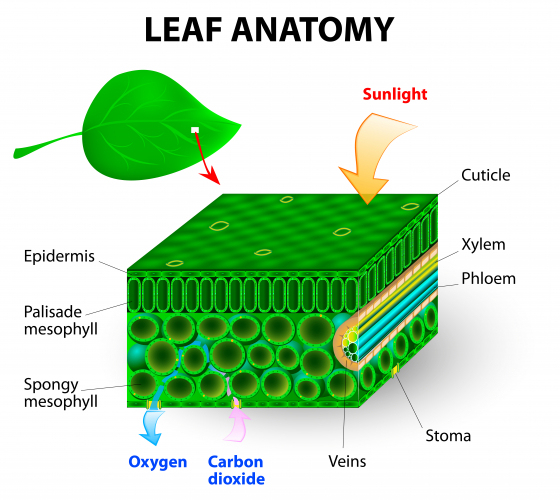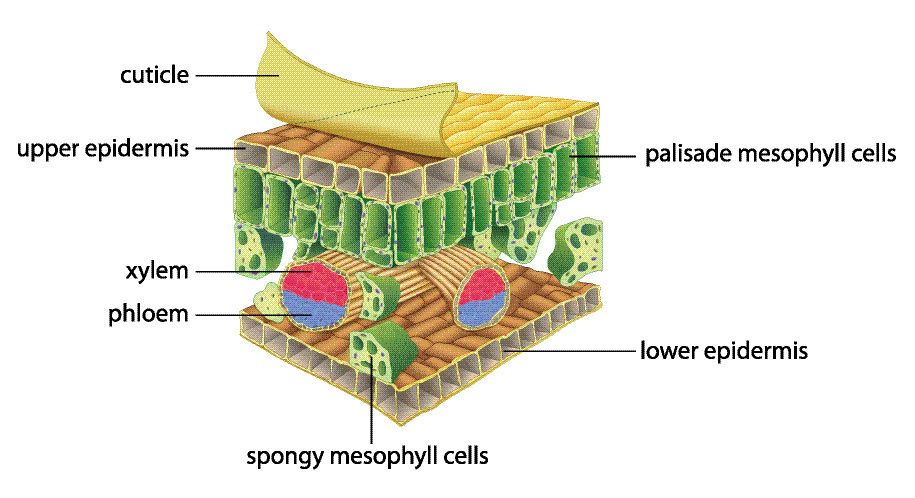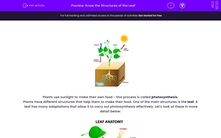.jpg)
Plants use sunlight to make their own food - this process is called photosynthesis.
Plants have different structures that help them to make their food. One of the main structures is the leaf. A leaf has many adaptations that allow it to carry out photosynthesis effectively. Let's look at these in more detail below:

The leaf is quite a complicated organ when looked at under a microscope, as you can see from the picture above!
The leaf is made up of many layers and each layer has a role to play in protecting the plant and helping it to produce food. Let's explore these layers:
The top layer of a leaf is called the waxy cuticle. The waxy part forms a protective layer over the leaf and reduces water loss from the plant. Directly underneath this is the epidermal tissue called the upper epidermis - this forms another protective layer and helps to reduce water loss too.
The next layer of cells is formed of palisade mesophyll cells. These are rectangular-shaped and are packed with loads of chloroplasts. The chloroplasts contain the pigment chlorophyll, which absorbs light to power photosynthesis.
Below the palisade mesophyll layer is the spongy mesophyll layer. The spongy mesophyll layer contains air spaces, allowing gases such as carbon dioxide and oxygen to diffuse in and out of the leaves easily. Within this spongy layer, you can find the xylem and phloem. The xylem is responsible for transporting water and minerals from the roots of a plant to the leaves. The phloem transports sugars around the plant to where it's needed.
The lower epidermis layer contains holes or pores called stomata (stoma for one pore). These stomata allow gases in and out of the underside of the leaf.

Meristems are found at the growing tips of shoots and roots. Meristem cells are able to differentiate into any other cell that the plant needs. This allows the plant to keep growing taller and wider.
In the following activity, you will consider the different structures of the leaf.








